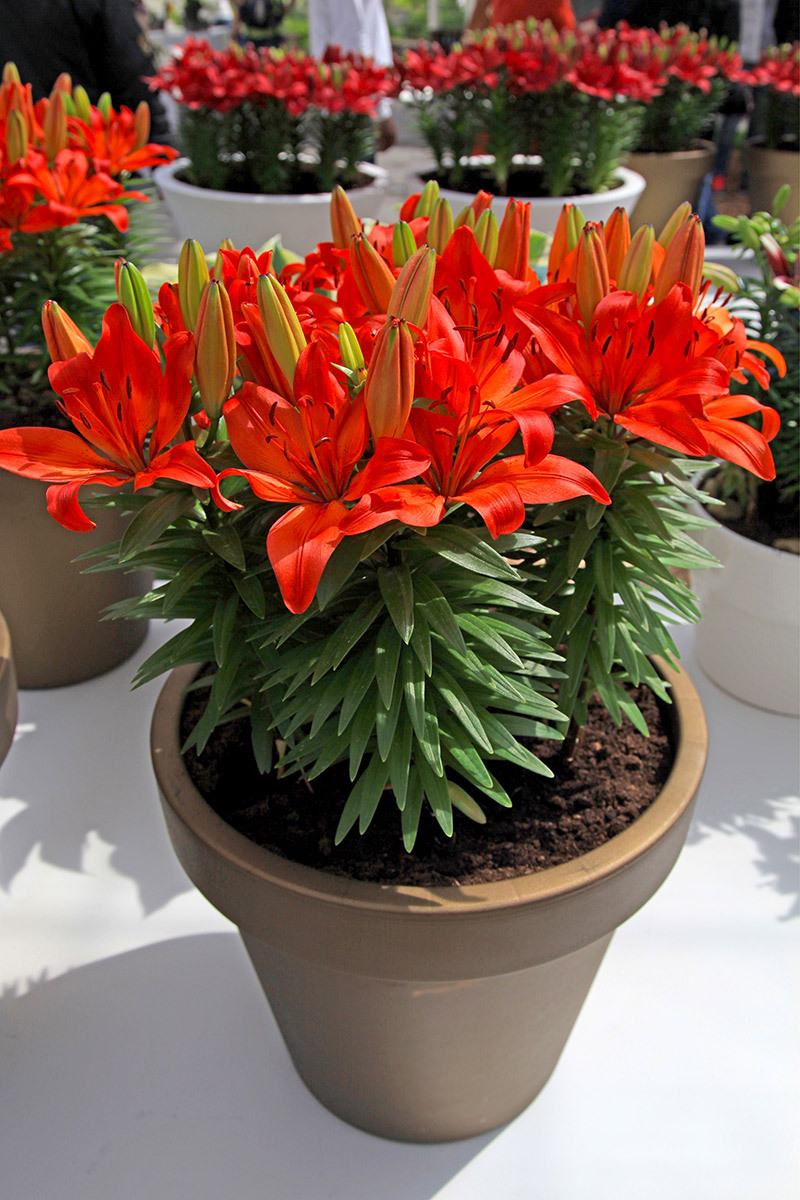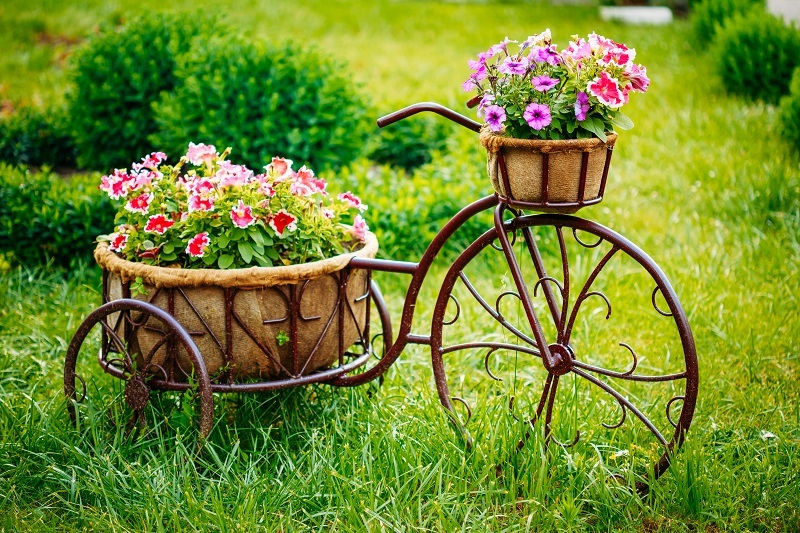Sunflower Secrets: 8 Little-Known Facts to Amaze You
Posted on 14/08/2025
Sunflower Secrets: 8 Little-Known Facts to Amaze You
Did you know that beneath the familiar golden petals of the sunflower lies a world of intriguing mysteries? Sunflowers are more than just garden beauties or a favorite seed snack -- they are an astonishing plant with remarkable secrets, fascinating history, and unexpected uses. Whether you're a gardening enthusiast, a nature lover, or just someone seeking new knowledge, you'll be captivated by these eight little-known facts about sunflowers.
1. Sunflowers Are Native to the Americas
When we think of vast stretches of sunflower fields, we might picture European landscapes. However, the sunflower's origin story starts much closer to home for many: the Americas. Archaeological evidence suggests that sunflowers were first domesticated over 4,500 years ago by indigenous peoples in present-day Mexico, the Southern United States, and Central America.
- Sunflowers were used as food, medicine, dye, and oil far before they became a global agricultural crop.
- Indigenous tribes recognized the value of every part of the plant - from the seeds to the stem.
It wasn't until the 16th century that Spanish explorers brought sunflowers to Europe, where their vibrant beauty and utility quickly made them popular.

2. Sunflowers Are Not Just One Flower
The cheerful face of a sunflower appears as a single large bloom, but look closely! Sunflowers belong to the botanical family Asteraceae, which means what looks like one flower is actually hundreds -- sometimes thousands -- of tiny florets tightly packed together.
- Each floret can become a seed if pollinated. This perfect design maximizes seed production.
- The central circular part (disc) contains these florets, while the surrounding yellow "petals" (ray florets) are actually separate small flowers in disguise.
Fun Fact: This flower arrangement is called a composite inflorescence.
Why Is This Structure Important?
Composite heads attract pollinators like bees by providing a high concentration of nectar and pollen in a single spot. It's an ultimate survival strategy that makes sunflowers one of the most efficient pollinator plants in the garden.
3. Sunflowers Track the Sun (Heliotropism) - But Only When Young
You've likely heard that sunflower plants turn their heads to follow the sun. This phenomenon, called heliotropism, is a real spectacle. But here's a secret: Mature sunflowers stop tracking the sun!
- Young sunflowers face east at dawn and slowly follow the sun across the sky to face west by evening, repeating the dance day after day.
- When they reach maturity and start blooming, the flowers usually settle facing east and stop moving.
Research suggests this eastward orientation actually helps attract pollinators -- flowers facing the morning sun warm up more quickly, making them more inviting to bees.
4. Some Sunflowers Can Grow to Record-Breaking Heights
If you've ever tried your hand at growing sunflowers, you know they can tower over many garden plants. But just how tall can a sunflower grow? You might be surprised:
- The current Guinness World Record for the tallest sunflower stands at a staggering 30 feet 1 inch (9.17 meters). Grown by Hans-Peter Schiffer of Germany, this sunflower was taller than most single-story buildings!
- Giant sunflower varieties like 'Mammoth' routinely reach heights of 12 to 15 feet in gardens.
Such impressive growth is only possible due to the sunflower's robust root system and rapid growth rate -- sometimes up to 12 inches in a single week during peak season!
5. Sunflowers Are More Than Just Pretty - They Are Environmental Heroes
Did you know that sunflowers have been used to clean up toxic soil? This property makes them true environmental superstars.
- Phytoremediation: Sunflowers have a unique ability to absorb heavy metals and harmful substances, such as lead, arsenic, and uranium, from the ground.
- After the Chernobyl nuclear disaster, sunflowers were planted to extract radioactive isotopes from contaminated soil and water.
This little-known fact about sunflowers makes them an invaluable tool for cleaning and restoring polluted landscapes around the globe.
6. Sunflowers Are Packed With Nutrition and Versatility
Sunflowers aren't just garden ornaments; their seeds and oils are packed with nutrients and health benefits! Here's why sunflower products are so popular:
- Sunflower seeds (sometimes called 'sunflower nuts') are an excellent source of healthy fats, protein, fiber, vitamin E, selenium, and magnesium.
- Sunflower oil is prized for its high smoke point, heart-healthy properties, and a light, neutral flavor that's perfect for cooking.
- The seeds are used in everything from snack bars to bread, salads, and trail mixes.
But it doesn't stop at food -- sunflower oil is even used in cosmetics, soaps, and biofuels. In some cultures, every part of the plant serves a purpose: dye, fodder, and even as a cleaning abrasive.
7. Sunflowers Have Deep Symbolic Meanings in Art and Culture
Sunflowers have captured the imaginations of artists, poets, and cultures through the ages. Their bright appearance and strong upright stance make them a universal symbol of positivity. But there's more beneath their petals:
- In many cultures, sunflowers represent loyalty, adoration, and longevity.
- They are the official flower of solar deities in ancient mythology -- often linked to the sun for their vibrant color and solar following behavior.
- Vincent van Gogh's iconic series of sunflower paintings turned the flower into an emblem of hope, warmth, and creativity.
In modern times, sunflowers are a symbol of environmental hope, resistance, and peace--most recently adopted by movements advocating for a cleaner, nuclear-free planet.
8. There Are Hundreds of Sunflower Species and Colors
When most people imagine a sunflower, they think of a single tall plant with a big yellow head. But the Helianthus genus (the scientific name for sunflowers) contains about 70 different species, and a surprising diversity of forms and colors.
- Sunflower blooms come in shades of red, orange, copper, maroon, and even pale cream -- perfect for diversifying your garden beyond the classic yellow.
- There are bushy dwarves that grow just 2 feet tall and branching varieties covered in multi-colored blossoms.
- Hybridization has created hundreds of cultivars suited for every climate and garden space.
Some of the most popular sunflower varieties for gardens include 'Autumn Beauty' (with multi-hued petals), 'Teddy Bear' (a fluffy dwarf type), and the rich, red 'Moulin Rouge'. There's a sunflower for every garden style!
Bonus Secret: Sunflowers Inspire Math and Science!
As a special add-on, did you know that sunflowers are ground zero for one of nature's most beautiful math patterns? The arrangement of seeds in a sunflower head forms a spiral pattern that closely follows the Fibonacci sequence, maximizing the number of seeds in a given space.
Scientists and mathematicians have long marveled at how sunflower seed spirals display the "golden ratio," frequently found in art, architecture, and nature's own designs.

Conclusion: Unlocking the Magic of Sunflowers
From their American origins to their record-breaking heights, environmental benefits, and cultural impact, sunflowers carry a multitude of secrets beneath their sunny faces. Whether you're growing them for beauty, health, or environmental restoration, learning these little-known facts about sunflowers deepens our appreciation for this beloved plant.
Next time you see a sunflower, remember--it's not just a pretty face in the garden. It's a miracle of nature, history, and science all in one. So share these sunflower secrets and inspire others to see this iconic flower in an entirely new light!
Frequently Asked Questions About Sunflowers
- Are sunflowers easy to grow? Absolutely! Sunflowers thrive in well-drained soil, plenty of sunlight, and need minimal care once established, making them perfect for beginner gardeners.
- Can I eat sunflower seeds straight from the flower? Yes, but it's best to let them mature, dry, and either roast or rinse them to remove bitterness from the hulls.
- How long do sunflowers bloom? Most sunflower varieties bloom for 4-6 weeks in mid to late summer, depending on the type and growing conditions.
- Do all sunflowers follow the sun? Only young flower buds exhibit strong heliotropism. Mature blooming heads usually face east and do not move.
Ready to grow your own? Explore the fascinating world of sunflowers, experiment with different varieties, and let their secrets brighten your garden and your knowledge!
Latest Posts
7 Fascinating Secrets About Tulips You Never Knew
Blossoming Identity: Which Flower Embodies Your Personality
Unveiling the secrets behind peony flower meanings and colors





